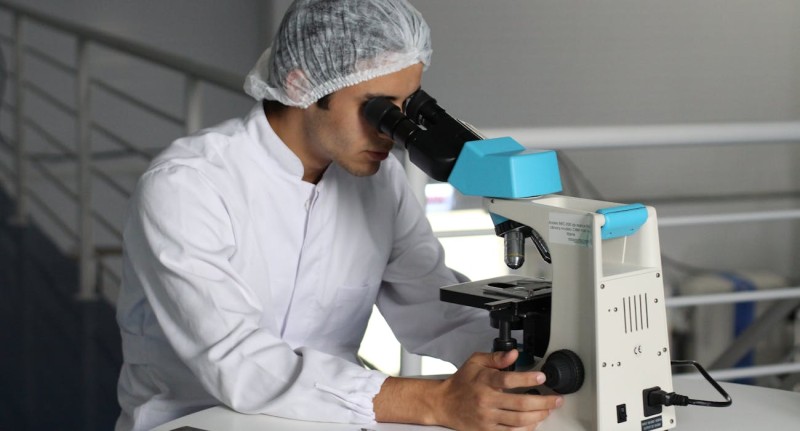Within the dynamic realm of science and technology, research facilities worldwide are perpetually seeking novel instruments to augment their investigative capacities, elevate precision, rationalize procedures, and accelerate breakthroughs. The landscape of research and development is changing, but so is the entry of new equipment into the modern laboratory. It's opening doors for groundbreaking discoveries that have the potential to completely alter our perception of the natural world.
In this blog post, we'll take a closer look at six emerging devices that are expanding what can be accomplished in the laboratory, and showing how these advancements allow researchers to take on previously insurmountable tasks with unparalleled effectiveness and precision. Read on to explore these cutting-edge technologies that are setting up future scientific discoveries.
Single-Cell Sequencing Technologies
Single-cell sequencing technologies are a cornerstone of contemporary laboratory innovations that are revolutionizing our understanding of biological details at the individual cell level. For instance, sophisticated devices like the single cell sorter, enable researchers to explore the transcriptome or genome of single cells and find genetic changes that are hidden, using conventional bulk sequencing techniques. This is essential for analyzing the variability within cell populations, critical for developing new cell types and states in developmental biology, and vital for making strides in the study of cancer.
Single-cell sequencing technologies are revolutionizing personalized medicine, drug discovery, and the way we approach complex diseases by offering a granular view of cellular diversity. This represents a significant advancement in the study of life's building blocks in the context of contemporary laboratory medicine.
Artificial Intelligence-Powered Analytical Instruments
The analysis and interpretation of data are being completely transformed by artificial intelligence (AI), which has made its way into the laboratory. AI-driven analytical tools can process enormous volumes of data at previously unheard-of rates, revealing patterns and insights that human researchers would never be able to find. These tools improve experiment precision, lower the possibility of human mistakes, and drastically shorten research times, which makes them essential for anything, from environmental monitoring to medication development.
Lab-on-a-Chip Devices
The technology known as lab-on-a-chip, or LOC, reduces and unifies laboratory operations into a single chip that is between a few millimeters and a few square centimeters in size. These instruments can handle fluid volumes that are less than picoliters, which is incredibly small.
Because LOC technology allows for faster, more economical, and much smaller volumes of samples and reagents for investigations, it is revolutionizing modern laboratories. They have an especially big influence on medical diagnostics since they make it possible to screen for diseases quickly and conveniently on-site, which eliminates the need for bulky, costly laboratory equipment.
3D Bioprinters
3D bioprinting is an exciting breakthrough that uses cutting-edge technology to form organs and tissue structures layer by layer. Making organs available on demand through 3D bioprinting could completely revolutionize organ transplantation by eliminating donors altogether and significantly decreasing risks related to transplant rejection.
Furthermore, 3D bioprinters play an integral part in scientific fields by producing complex tissue models. These models are essential for drug testing and disease simulation because they provide scientists with a rare chance to watch closely how pharmaceutical chemicals interact with human tissues.
Avoiding the moral and practical difficulties associated with conventional human or animal testing opens the door to more effective and compassionate research techniques. By imitating intricate biological structures, 3D bioprinting is revolutionizing personalized medicine and pharmaceutical discovery, while also augmenting our potential for medical innovation.
Quantum Computing for Molecular Modeling
Revenue-wise, the global quantum computing market is expected to reach $5274.9 million by 2030. In the laboratory, quantum computing is starting to leave its impact by providing a fresh method for molecular modeling.
Quantum computers differ significantly from traditional ones in that they're highly accurate at simulating molecular interactions at the quantum level. This makes them invaluable tools in material science, chemistry, and pharmaceutical research requiring knowledge of intricate molecular structures and reactions for creativity. Because quantum computing makes it possible to efficiently and precisely model and forecast features, it has the potential to significantly speed up the creation of new materials and medications.
Smart Laboratory Wearables
Smart wearables are now used for purposes other than tracking fitness. Smart wristbands are improving safety and productivity in the lab by continuously monitoring the environmental conditions and health of researchers. These gadgets can track vital signs, identify chemical exposure, and even offer augmented reality (AR) instructions for difficult procedures. Smart wearables provide a safer working environment and allow scientists to concentrate on their studies, without sacrificing their health and safety, by smoothly connecting with other laboratory systems.
Conclusion
In addition to being evidence of how quickly technology is developing, the incorporation of these new devices into contemporary laboratories also holds out hope for the amazing possibilities that await scientific inquiry in the future. Each device, which ranges from intelligent laboratory wearables to AI-powered analytical instruments, has a distinct set of features that improve the effectiveness, precision, and security of research procedures.
We can anticipate seeing more advancements in laboratory procedures as these technologies develop and become more widely available, which will ultimately accelerate scientific innovation and discovery. These six devices are only the start of a trip that will significantly change laboratory research, which means the future of this field is promising.
